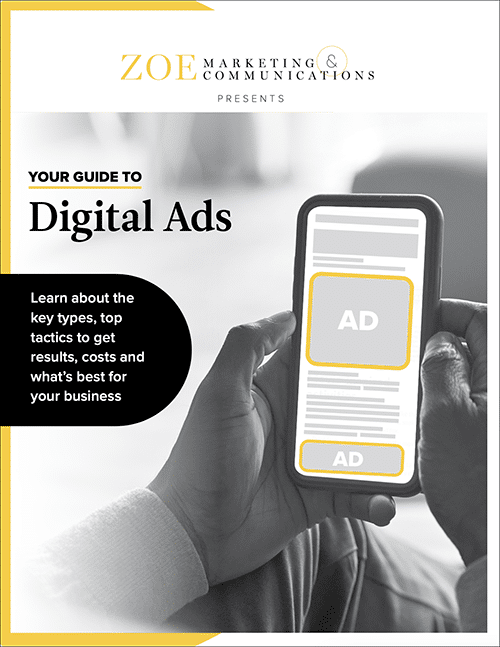
Download Your Digital Ads Guide
Learn how digital ads can help your business, including the tools, techniques and strategies to create successful campaigns.
August 26th, 2022 | 2 min. read
By Kim Kovelle

Whether scrolling online or flipping through a magazine, people notice ads. In fact, 82% of U.S. internet users trust print ads when making buying decisions, while 61% trust digital ads.
So, if you're weighing both options, which is best for you? Print builds credibility, while digital hones in on the right audience at the right time.
In this blog, we’ll compare digital and print ads across six factors:
You’ll walk away with a clearer understanding of which fits your business — or possibly both.
Learn how digital ads can help your business, including the tools, techniques and strategies to create successful campaigns.
These small, targeted visuals show up in articles, search results, and apps. Typically, they feature:
Placed in magazines or newspapers, these are visually engaging and ideal for niche audiences. They vary in size (quarter-page, half-page, full-page, etc.) and include:
Some businesses blend digital and print for maximum impact. These campaigns:
Whether you choose digital, print or both, the key is staying visible and building trust with your ideal customers.
If you’re leaning towards digital marketing, talk to us. Here at Zoe Marketing & Communication, we’ve crafted successful digital campaigns since 2020.
Or, if you’re still researching, check out these resources:

Learn how digital ads can help your business, including the tools, techniques and strategies to create successful campaigns.
As Zoe Marketing & Communications’ content manager, Kim Kovelle brings over 20 years of writing and editing experience in metro Detroit. She has strong roots in community journalism and a knack for making complicated topics make more sense.
